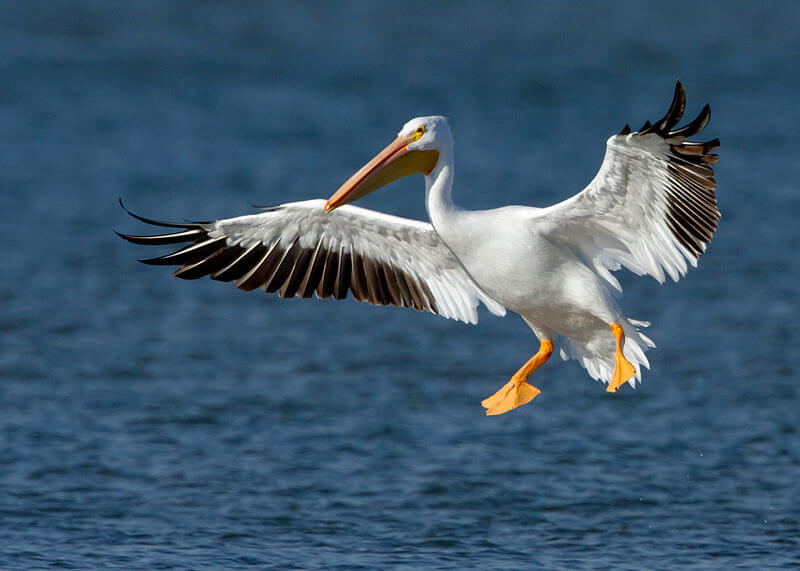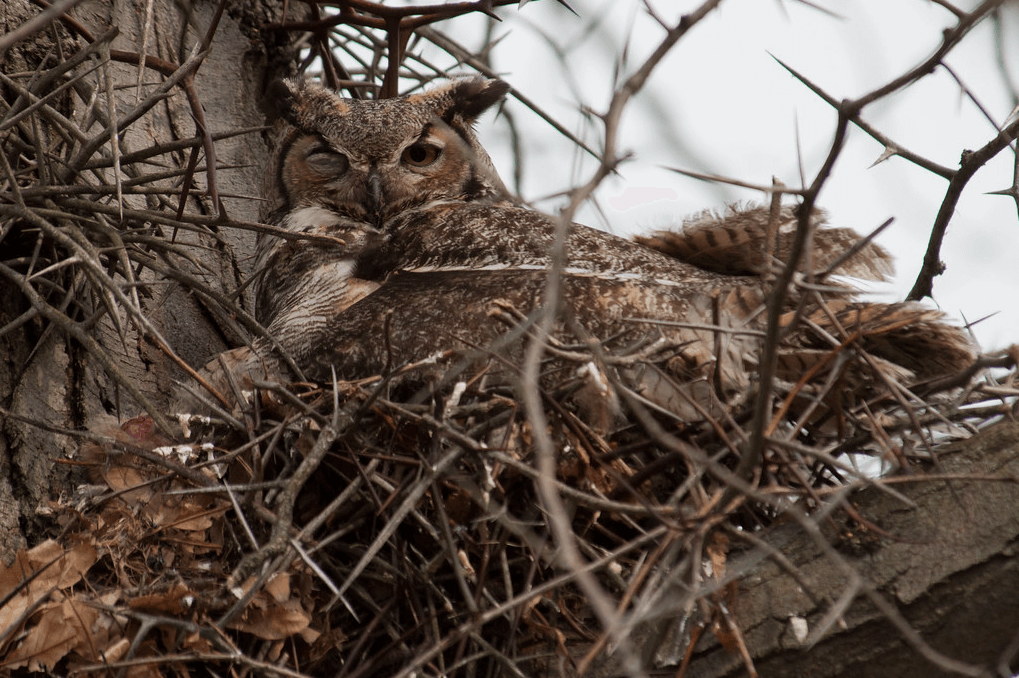By Whitney Bergum
Broadcast 7.28 and 8.2.2019

Photo by Manjith Kainickara, CC 2.0.
Listen:
It’s summer in Montana. The sun is bright and the Missouri River has never looked more refreshing. As I hike along a well-worn trail, I see two gorgeous American White Pelicans soaring to an unknown destination. Their grace and beauty are breathtaking.
I watch them disappear behind a river bend. Farther upriver I find where those pelicans were going. They are lounging on rocks in the middle of the river. It is a gorgeous sight and I realize how lucky I am to happen upon them. I wonder why I don’t see them come mid fall. Researchers have been able to clear up questions about where pelicans migrate and what hazards they face along the way.
Between August and October of each year, American White Pelicans make exceptional journeys to keep warm for the winter. Most of the pelicans that are summer residents in western Montana fly along two migration routes called the Pacific Flyway and the Intermountain Flyway. Pelicans that use the Intermountain Flyway travel south through Idaho; from Idaho, they continue down to the Salton Sea in southern California. Some keep flying to the west coast of Mexico. Others prefer to fly west along the Pacific Flyway, which follows the west coast from Oregon down to Mexico.
On the other hand, pelicans that spend the summer in eastern Montana use the Central and Mississippi flyways. Both of these flyways lead the pelicans through the central United States and along the Mississippi River to the south. Many of the birds spend the winter near the Gulf of Mexico. Others spend it in nesting grounds in central Mexico. Only a few pelicans from eastern Montana travel west. These birds fly to the Snake River in Idaho then south to the Colorado River. The minority of birds that choose this route end up near the west coast of Mexico.
These journeys are long and exhausting. It is no easy feat to fly the span of the entire west coast and the pelicans face many hazards. They risk potentially fatal injuries due to hail storms, gunshot wounds, entanglements and collisions with power lines or the poles supporting them. Pelicans are also at risk of exposure to harmful insecticides used near refuges and nesting areas along the Pacific Flyway. Many die of unknown causes.
One of the highest risks for the pelicans is disease. One disease in particular, type C botulism, seems to be the most deadly. Type C avian botulism is a paralytic disease caused by the consumption of certain bacteria. In 1996 type C avian botulism was rampant in the Salton Sea and over 700 American White Pelicans died. 11,588 pelicans have died from Type C botulism since 1980. Another high risk disease, West Nile Virus, which is transmitted by mosquitoes and swells the brain, resulted in the death of over 9,000 pelicans in 2002 and 2003. In addition, more than 5,000 birds have died from Newcastle Disease, a virus that has numerous symptoms ranging from lack of vigor to profuse diarrhea followed by the collapse of the infected bird.
If you should happen to come across these stunning creatures, stop and think. Think about the fact that many of these birds have seen more of our continent than many people. Consider the distance that pelicans travel each year and think about all the dangers they face along the way. Think about how many of them never make it back to our beautiful state and enjoy the sight of ones the ones that do.
Every week since 1991, Field Notes has inquired about Montana’s natural history. Field Notes are written by naturalists, students, and listeners about the puzzle-tree bark, eagle talons, woolly aphids, and giant puffballs of Western, Central and Southwestern Montana and aired weekly on Montana Public Radio.
Click here to read and listen to more Field Notes. Field Notes is available as a podcast! Subscribe on iTunes, Google Play, or wherever you listen to podcasts.
Interested in writing a Field Note? Contact Allison De Jong, Field Notes editor, at adejong [at] montananaturalist [dot] org or 406.327.0405.
Want to learn more about our programs as well as fun natural history facts and seasonal phenology? Sign up for our e-newsletter! You can also become a member and get discounts on our programs as well as free reciprocal admission to 300+ science centers in North America!












